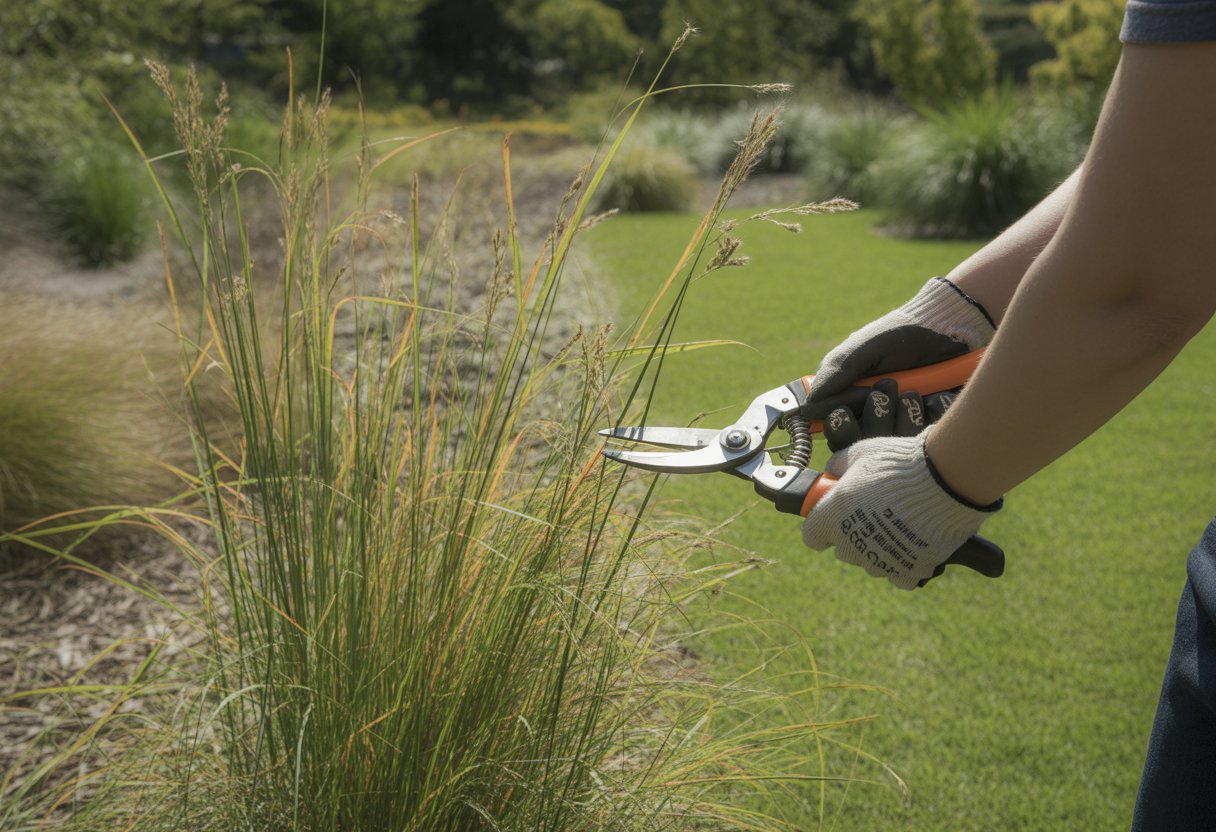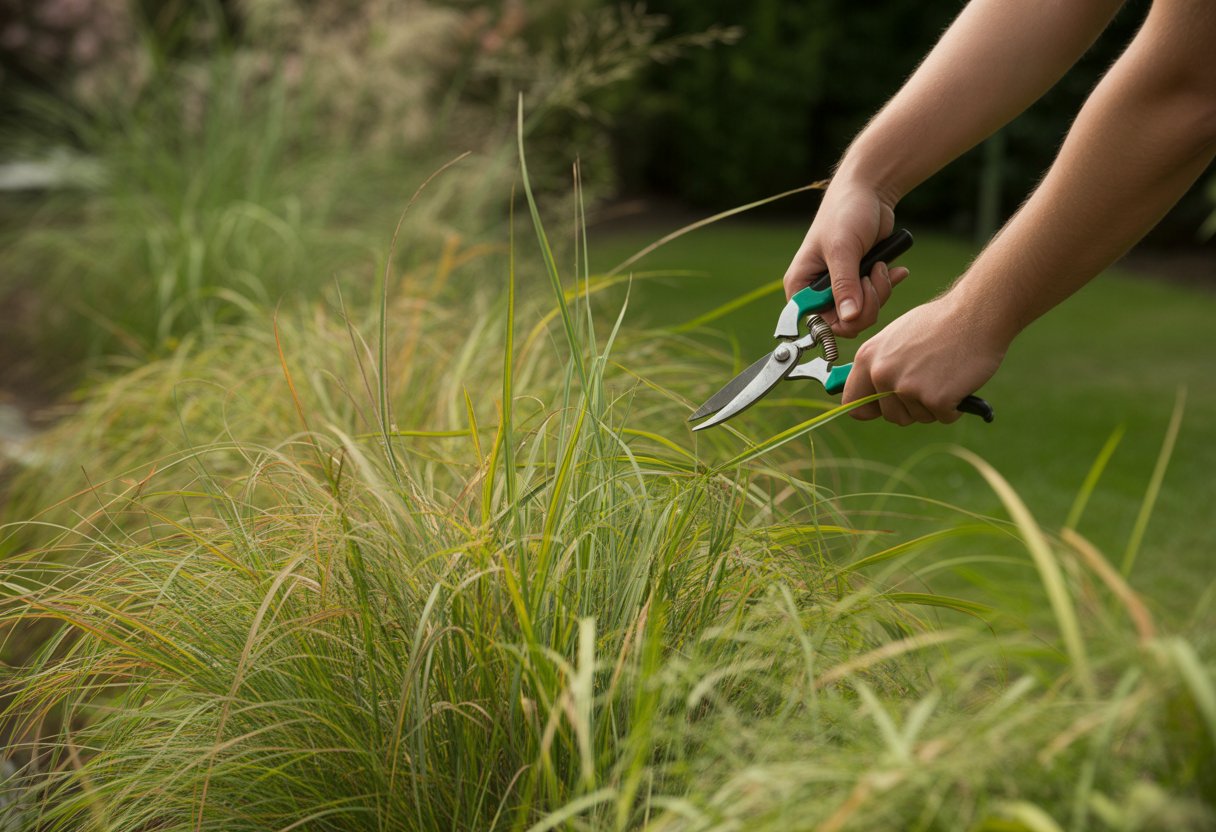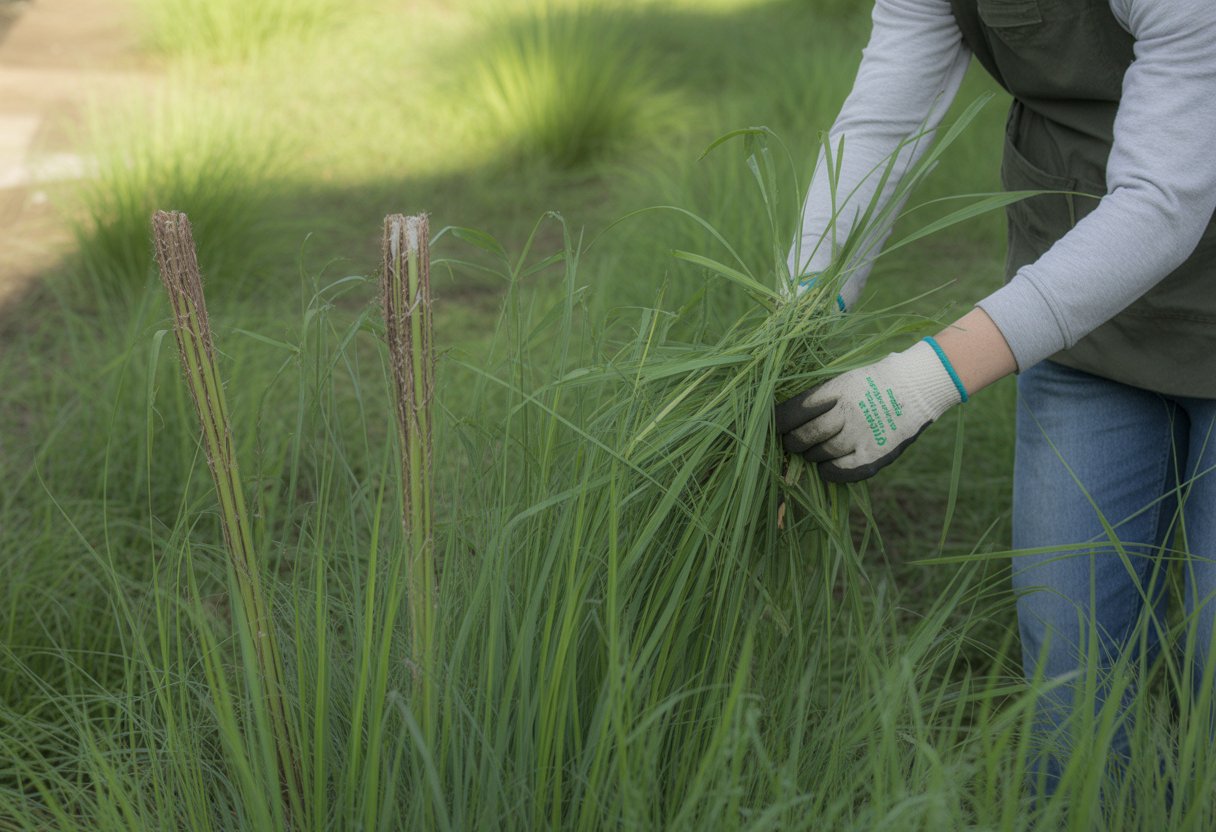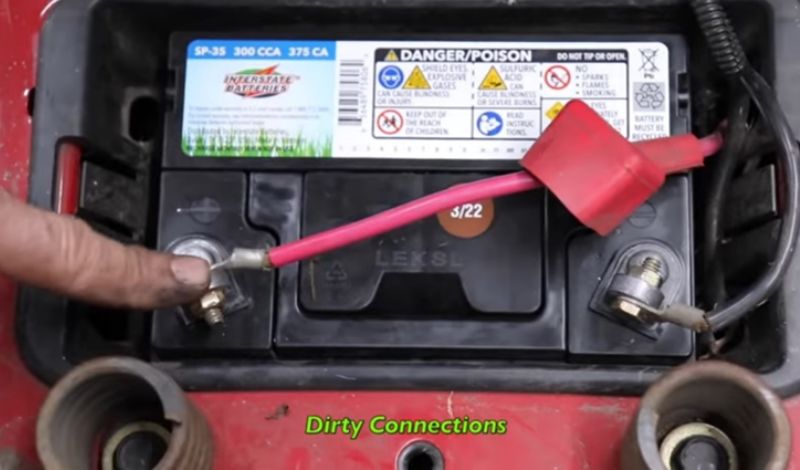How to Prune Switchgrass for Optimal Growth and Health
Pruning switchgrass, or Panicum virgatum, means cutting back this warm-season grass in late winter or early spring, just before new shoots poke through. Trim the plant to about 4 to 6 inches above the ground—this removes old, dead stems and encourages healthy, vigorous growth.
This method keeps ornamental grass clumps tidy and helps them keep their natural shape.

Switchgrass, native to North America, stands out for its hardiness and year-round interest. When you prune it right, you open up airflow in the clump and give the stems a better shot at standing tall all summer.
By handling switchgrass with care, gardeners keep it looking sharp and healthy.
Understanding Switchgrass Growth
Switchgrass (Panicum virgatum) is a warm-season perennial grass, prized for drought tolerance and its ability to handle all sorts of climates. It loves full sun and often pops up as an ornamental grass or for erosion control.
Traits like growth cycle length, variety, and climate adaptability all influence how you should prune and care for it.
Growth Cycle and Dormancy
Switchgrass kicks into gear in late spring, once soil temperatures hit about 55°F (13°C). By late summer or early fall, it’s usually at its tallest, showing off seed heads.
As a warm-season grass, it goes dormant when cold weather rolls in. In USDA zone 4, switchgrass browns and fades back in late fall, then stays dormant through winter.
If you cut back the browned foliage in early spring, you help the plant push out fresh growth.
Dormancy lets switchgrass save energy and survive tough weather. If you prune at the wrong time, though, you could set it back.
Varieties of Switchgrass
You’ll find several popular cultivars, each with their own quirks. For instance:
- ‘Northwind’: Tall, upright, great for erosion control.
- ‘Cloud Nine’: Compact, fine-textured, a favorite for ornamental beds.
- ‘Heavy Metal’: Steel-blue stems, adds a cool visual twist to gardens.
Height, stem thickness, and color differ among these, so their pruning needs do too. Tall varieties usually need a more thorough spring trim, while compact ones get by with lighter pruning.
Adaptability and Climate Requirements
Switchgrass prefers full sun and well-drained soil. Once it’s settled in, it barely flinches at drought and thrives in zones 4 through 9.
It can handle a wide range of soils and shrugs off most pests, so it’s pretty low-maintenance. But heavy shade or soggy ground? That’ll stunt it.
Knowing your local climate helps you time pruning for the best results. Try to sync up maintenance with your area’s seasons so you don’t mess with its growth rhythm.
Why and When to Prune Switchgrass
Pruning switchgrass keeps it in check, shapes it up, and boosts its health. When you prune matters—a lot.
Benefits of Pruning
Pruning gets rid of old, dead foliage so fresh growth can take over in spring. It stops the clump from getting overcrowded, which helps air move through and keeps disease at bay.
If you leave some foliage up for winter, you get nice texture and interest in the garden. Cut it back before new shoots show, though, so the plant doesn’t waste energy on dead stuff.
Best Time for Pruning
The sweet spot for pruning switchgrass is late winter to early spring, just before new growth gets going. This keeps the winter look but ensures the plant bounces back strong.
Don’t prune in fall—you’ll lose out on fall color and winter structure. If you cut too early, you might clip off new shoots and make the plant less tough.
Impacts on Garden Aesthetics
Leaving switchgrass standing through winter gives your garden movement and texture. Those golden seed heads and dried blades add subtle color, playing nicely with evergreens and bare trees.
When you prune in spring, you clear out the old, faded stuff. That lets the bright, clean stems and fresh leaves shine, making the garden look tidier and more vibrant.
How to Prune Switchgrass Effectively

You’ll want to prep, use the right tools, and focus on clearing out last season’s growth to help switchgrass thrive. Safety and clean-up matter just as much as the actual pruning.
Tools and Safety Guidelines
Grab sharp shears or hedge trimmers for clean cuts. Bypass pruners are easier on the stems than anvil types. Gloves save your hands from those sharp edges.
Long sleeves and eye protection help protect you from scratches and flying debris. Clean your tools before you start so you don’t spread diseases between plants.
Keep your gear in good shape for better results. I like to lay out a tarp nearby for the cuttings—it makes cleanup way easier.
Step-by-Step Pruning Process
Start in late winter or early spring, before new growth pops up. Cut the switchgrass down hard, leaving 4 to 6 inches of stubble.
This leaves the crown healthy and encourages strong new shoots.
Cut at an angle to keep water from pooling on the stems. Don’t cut too low—you’ll risk damaging the roots and slowing recovery.
Once you’re done, clear out all the debris to keep pests and diseases away. Give the plant a modest drink of water to help it bounce back.
Removing Old Foliage
Getting rid of old foliage is key for switchgrass health and looks. Dead blades can hide pests and block sunlight.
Cut all the brown or dry leaves down at the base during spring pruning. Rake out any leftover debris to boost air flow.
Removing the old stuff also keeps fungus from taking hold in damp, decaying leaves. The plant looks neater and can focus its energy on new shoots.
You’ll usually see denser, lusher growth once you clear out the old material.
Caring for Switchgrass After Pruning

After pruning, a little care goes a long way. Water, pest checks, and knowing how switchgrass fits in with other plants all help keep it thriving.
Ongoing Maintenance
Switchgrass likes steady moisture but hates soggy feet. Water once or twice a week during dry spells to keep roots happy.
A balanced, slow-release fertilizer in early spring gives it a boost without overdoing it.
Clear out dead leaves and debris regularly to stop fungus from moving in. Mulch with organic stuff like shredded bark to hold moisture and block weeds.
Cutting back every late winter keeps that vertical accent and blue-green color sharp. It also helps air move through the clump, which keeps disease away.
Common Pests and Diseases
Switchgrass usually shrugs off pests, but stressed plants can attract aphids or spider mites. Check weekly, and treat early with insecticidal soap or neem oil if you spot trouble.
Rust or leaf spot might show up in humid stretches. Pull off any bad leaves and keep air moving to limit problems.
Don’t water from overhead—wet leaves invite disease. Compared to grasses like miscanthus or northern sea oats, switchgrass has fewer pest headaches, but it still pays to keep an eye out, especially after pruning or in muggy weather.
Switchgrass in Mixed Plantings
Switchgrass pairs nicely with drought-tolerant natives like blue grama (Bouteloua gracilis) and blue oat grass. These combos bring some real textural contrast and keep things interesting through the seasons.
In mixed borders, switchgrass’s upright shape stands out against the broad leaves of chasmanthium latifolium. That mix really boosts the garden’s overall structure.
If you’re planting with species that get similar fungal issues—northern sea oats come to mind—give them a little breathing room. Good spacing and regular upkeep go a long way to keep every plant happy and healthy.


